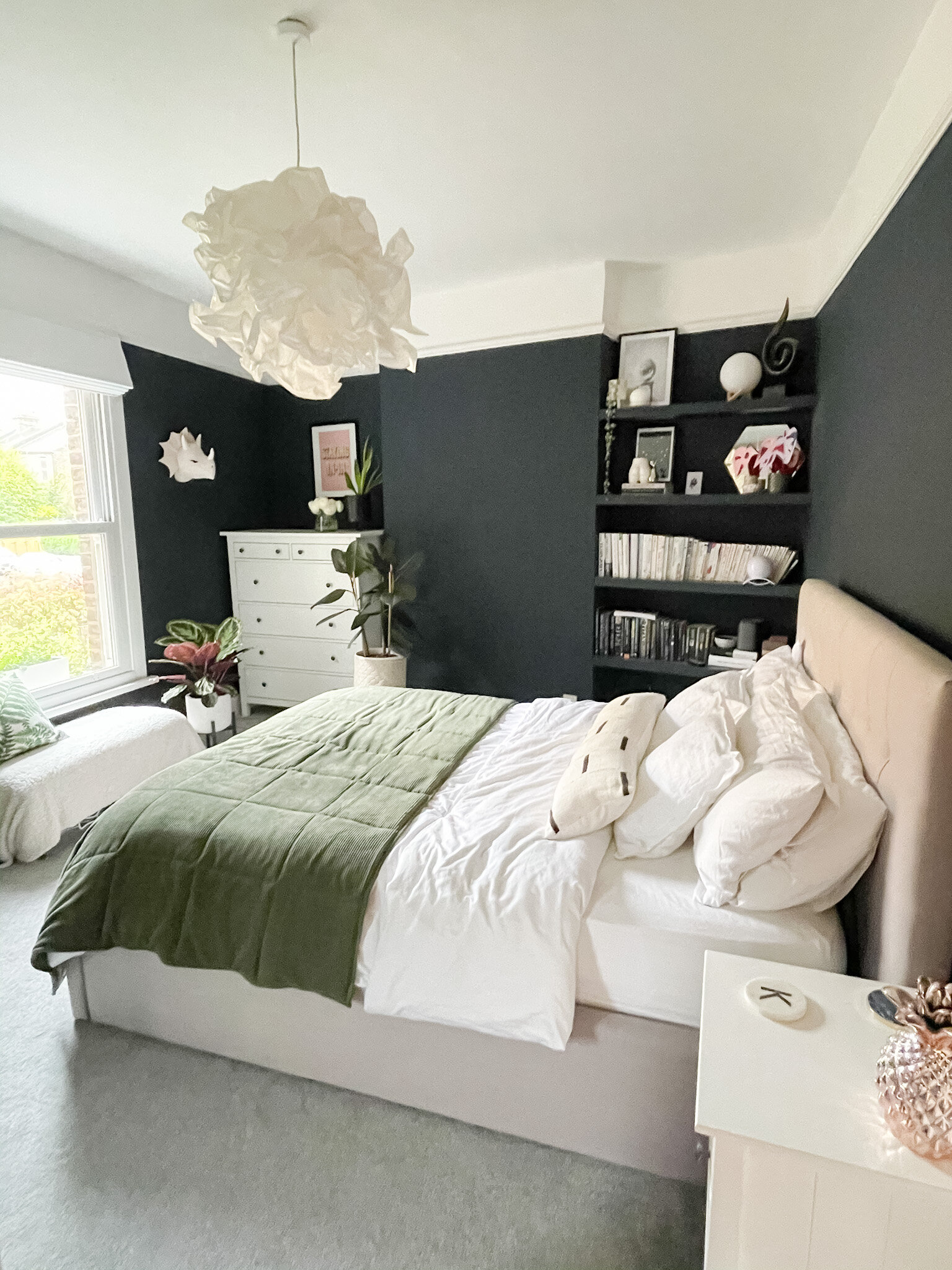Choosing the right lighting for your home
Lighting plays such a huge role in how we feel in our homes, and in this blog post I'm going to talk about the ways we can use it to make the most of our spaces.
Is there a cloud in the bedroom, or is it just the Ikea Krusning lampshade?
Cool vs warm light
Before we start talking about the types of lighting, it's important to identify the impact of light temperature.
Warm to cool light, lightingsupply.com
Warm light is perceived with amber tones, and gives a warm glow to a space. It's good for creating a feeling of coziness and warmth, and is ideal for areas where you'd want to relax, like a living room or a bedroom.
On the other side of the scale is cool lighting. This is perceived with blue tones and promotes alertness and concentration. It's good for spaces where you'd need to concentrate or see fine detail, like a bathroom or an office. You should avoid blue light in spaces where you're going to spend time before sleeping, as it is known to mess with your body's ability to prepare for sleep.
Once you’ve got the temperature right for your space, there are 3 types of light that you consider when decorating your home.
1. Ambient light
Ambient light being provided here by the chandeleir and windows. Vintage Revivals.
Ambient (or general) light is the base of light in a room; this can come from an overhead light or lampshades throughout the space. It’s primary goal is to make sure everything is visible in the room.
There's more to consider than just "does it light up the area". Consider your lampshade and what it does to the light; does it cast patterns on the wall? Does it mirror and bounce the light around the room? Does it dull the light?
Spotlights are good for rooms which require a lot of light for concentrated tasks; think bathrooms and kitchens. They're not so good for rooms which you'd perhaps want a cosier vibe in - like bedrooms and living rooms. Who wants to stare up directly into a spotlight from their bed?!
As a rule of thumb, light bulbs should not be visible. You shouldn't walk into a room and be able to gaze directly into a light source thus temporarily blinding yourself. There are of course exceptions; spotlights and decorative bulbs (e.g. Edison bulbs).
2. Task lighting
Ambient light provided by the overheard chandeleir, with task lighting as a floor lamp behind the sofa for reading. @katespiers
The second type of lighting is task lighting, which quite simply is lighting that you need for specific tasks; mainly reading or writing.
For this type of lighting you'll want to look for pendant lights, desk lamps, floor lamps and lights that allow you to move and rotate the light source.
Think about what you're going to be doing in a room, floor lamps next to a sofa will light up the space if you're reading, or a lamp on a table next to an armchair.
3. Accent lighting
Accent lighting being used here to light up both the alcove shelves and highlight the painting above the mantel. A Well Dressed Home.
Finally, we have accent lighting, which is used to draw attention to things. Think small spotlights above pieces of art, spotlights along the top of a wardrobe to light up it's contents, or spotlights inside a glass door cabinet to show off collections inside.
By combining these three types of lighting we can enhance the spaces in our homes to make a cosy, welcoming and relaxing environment.
So - when you’re planning your next space, here are the questions you should think about with regards to your lighting.
How do I want to feel in the space? Alert or relaxed?
What activities will I be doing in the space and how do they need to be lit?
Are there any focal points in the room which I might want to highlight?
By asking these questions first and designing your lighting around your answers, you’ll make the space work for you and everything you need to do in it.
If you’d like my help with your next project, check out my services to see how we can work together.















